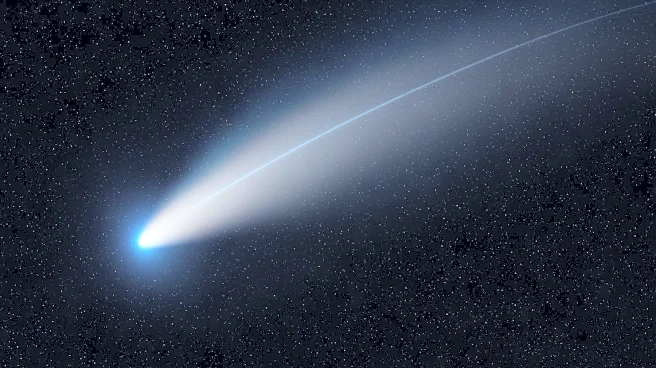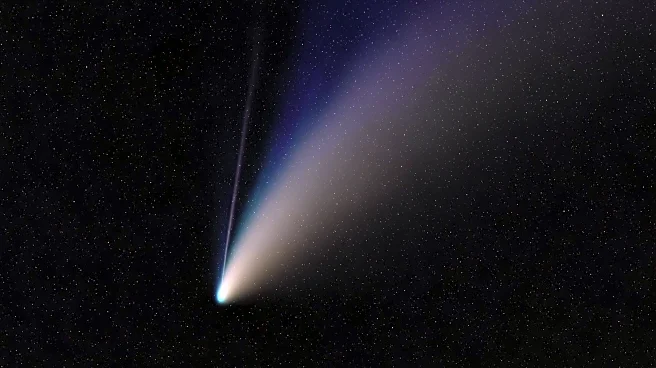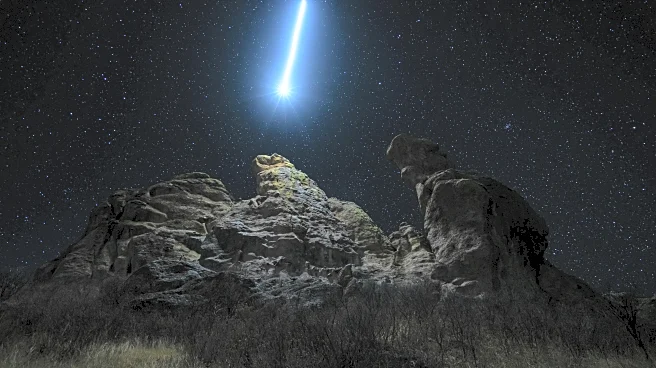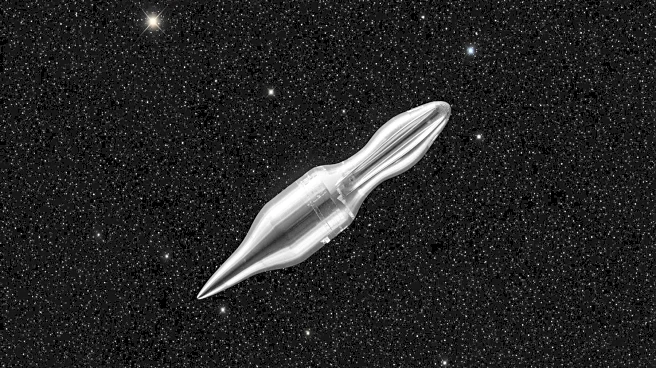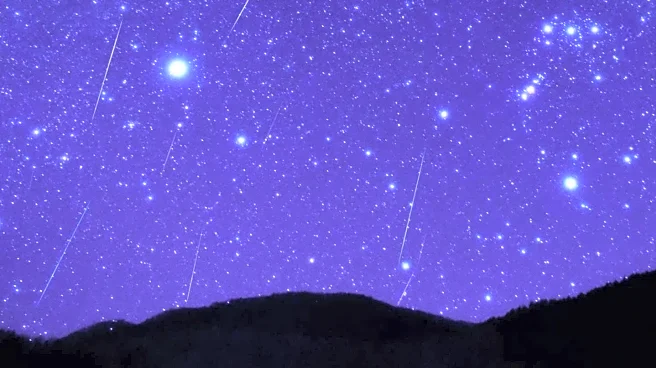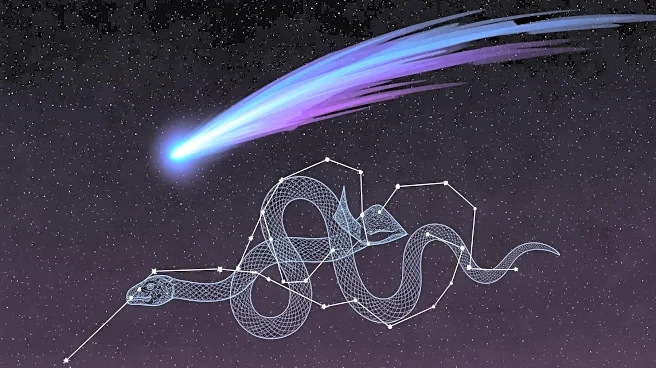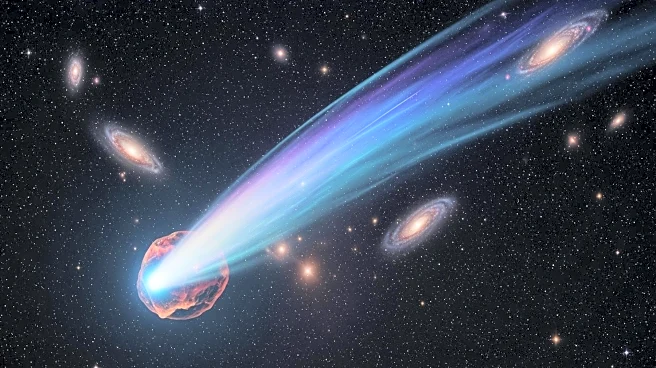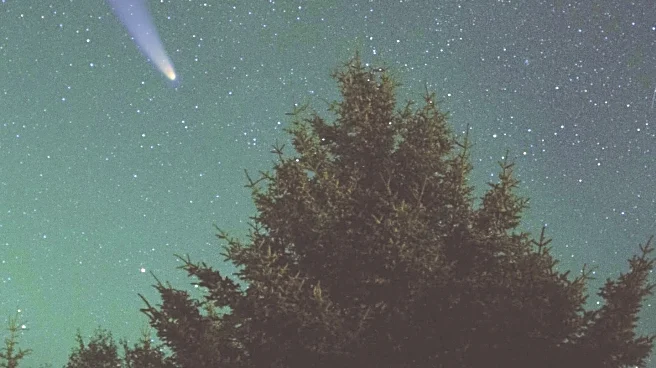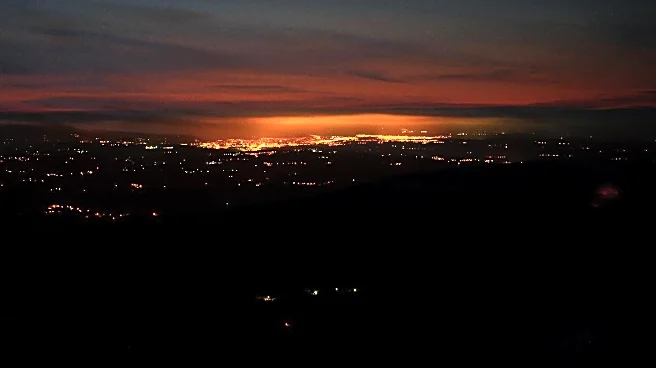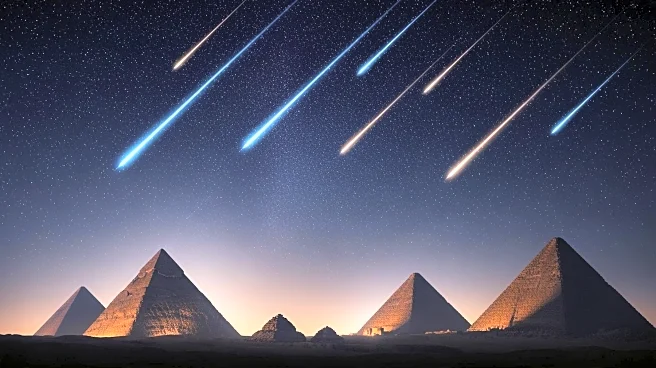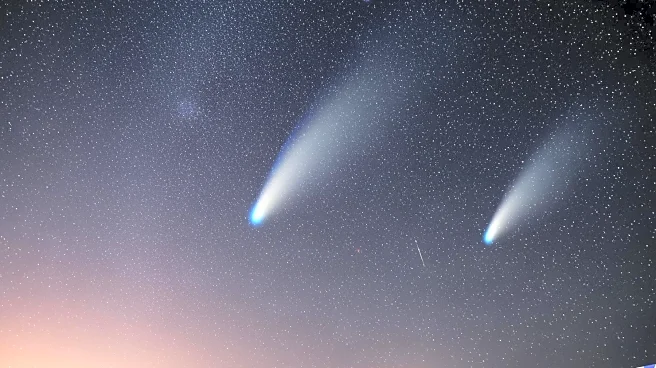What's Happening?
Comet C/2025 A6, known as Comet Lemmon, has become one of the brightest comets visible from Earth this year. Discovered in January 2025 at Arizona's Mt. Lemmon Observatory, the comet has rapidly brightened
to a magnitude of +4 by late October. It made its closest approach to Earth on October 21, passing at a distance of approximately 56 million miles. The comet is visible in the northwestern sky about 45-90 minutes after sunset, near the constellation Boötes. Observers can see its green glow and tail with binoculars or a telescope. Comet Lemmon will continue to be visible until early November, after which it will vanish into space, not to return for another 1,300 years.
Why It's Important?
The appearance of Comet Lemmon is significant for astronomers and skywatchers, as bright comets have been scarce in recent years. This event provides a unique opportunity for public engagement with astronomy, potentially inspiring interest in the field. The comet's visibility coincides with the Orionid meteor shower, offering a chance to witness two celestial phenomena simultaneously. The comet's rarity and brightness make it a once-in-a-lifetime event, as it will not return until the 32nd century. This spectacle has led to increased interest in astronomy, with more people purchasing telescopes and attending comet-watching events.
What's Next?
Comet Lemmon is expected to peak in brightness around October 26-27 as it approaches the Sun. After November 8, it will swing around the Sun and begin its journey back to the outer solar system, fading from view. Observers are encouraged to take advantage of clear skies in late October to view the comet before it disappears. The comet's departure marks the end of a rare opportunity for skywatchers, as it will not be visible again for over a millennium.
Beyond the Headlines
Comet Lemmon's appearance highlights the dynamic nature of comets, as its tail was recently affected by solar wind, causing a temporary disconnection event. This underscores the unpredictable behavior of comets, which can change rapidly due to interactions with solar particles. The comet's green color is due to the presence of diatomic carbon and cyanogen, which emit green light when energized by sunlight. This event serves as a reminder of the beauty and complexity of the universe, encouraging public interest in space exploration and scientific discovery.
